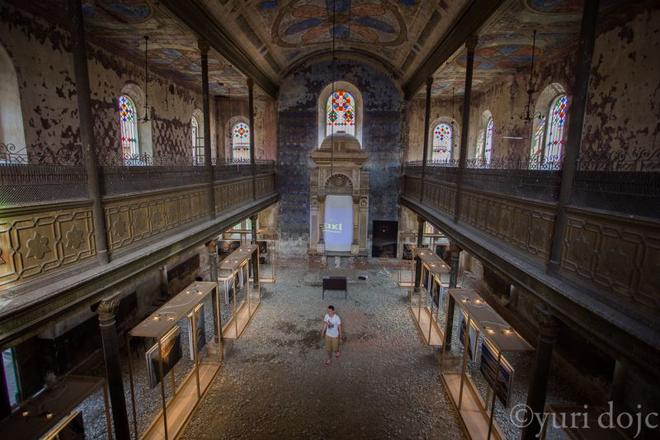KOŠICE, the city that has become the 2013 European Capital of Culture (ECOC), was known for its multiculturalism and wide range of ethnic, social and cultural influences for centuries. This year, it offers a wide range of cultural projects and events, many of them international or inter-cultural. One of them, the photo exhibition by Yuri Dojc called Last Folio, focuses on the Jewish community and is installed in a fitting location: the local, old “Small Synagogue”.
“Košice… is playing host to all aspects of culture in the region – once the far-eastern hub of the Austro-Hungarian Empire, where Poles, Hungarians, Slovaks, Ukrainians and Jews co-existed in a truly multicultural space,” a press release accompanying the exhibition states about this eastern-Slovak city. However, time and the changing regimes have taken their toll both on humans and on the cultural heritage.
Dojc, born in eastern Slovakia, emigrated after the suppression in 1968 of the “Prague Spring”, and settled in Toronto, where he has since become an internationally acclaimed photographer, exhibiting in numerous countries worldwide, including his homeland, and publishing his photos in books. His current exhibition depicts Jews, the victims of another totalitarian regime, and the unspeakable tragedy which swept across almost all of Europe, the Holocaust. The photographs show disintegrating books in Hebrew, silent relics of what was once a thriving community in Slovakia. Dojc recalls that he started to accompany Mrs. Vajnorská, a Holocaust survivor whom he met in 1997, on her visits to others who met a similar fate: “And so I started photographing these people and the world they live in.”
By coincidence, Dojc and a documentary film crew came across an abandoned Jewish school in eastern Slovakia, “where time had stood still since the day in 1942 when all those attending it were taken away to the [concentration] camps….” the catalogue says. “These decaying books lying on dusty shelves; the last witnesses of a once thriving culture, are treated by Yuri Dojc as the individual survivors that they are – each book captured as in a portrait, preserved in their final beauty, pictures speaking a thousand words.”
Among these many hundreds of books and fragments photographed by Yuri, one in particular stands out: a book that miraculously found its way from a dusty pile to its rightful heir - it was once owned by Yuri’s grandfather Jakub. “And so a journey which began with the portrait of his father came full circle”, reads the catalogue.
This project, which has lasted for more than a decade (and of which Last Folio represents a part), was first presented in the Slovak National Museum in Bratislava in 2009, before continuing to Prague in the Czech Republic and Cambridge in the UK. In 2011, it opened in the Museum of Jewish Heritage in New York, and Bloomington, Indiana. Later, other cities in the US and Canada followed. In Europe, it was seen at the European Commission in Brussels and at the Pierre Berge Foundation in Belgium. After Košice, it will travel to Rome and Moscow.
The exhibition Last Folio – The Tales of Yuri’s Pictures opened in the synagogue on Zvonárska 7 on June 11 and can be seen until August 28, in Košice’s oldest synagogue, which dates back to 1883, and which, despite falling prey to the communist regime, is now being gradually reconstructed.


